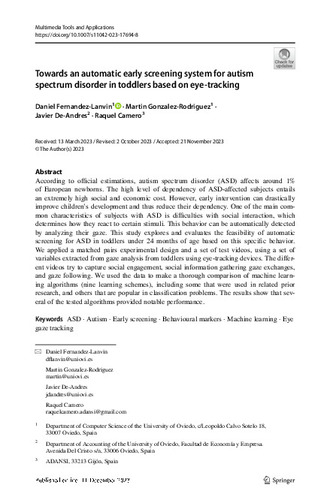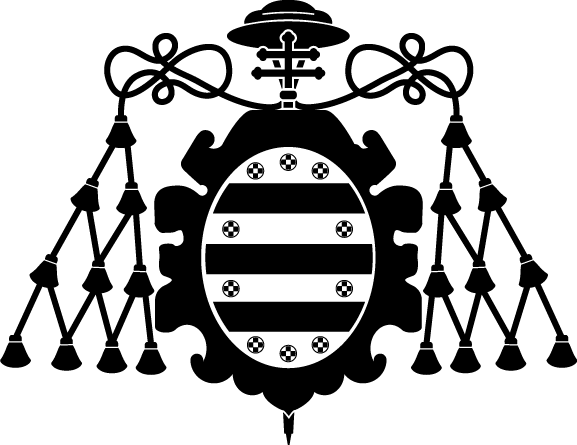Towards an automatic early screening system for autism spectrum disorder in toddlers based on eye‑tracking
Autor(es) y otros:
Fecha de publicación:
Versión del editor:
Citación:
Resumen:
According to official estimations, autism spectrum disorder (ASD) affects around 1% of European newborns. The high level of dependency of ASD-affected subjects entails an extremely high social and economic cost. However, early intervention can drastically improve children’s development and thus reduce their dependency. One of the main common characteristics of subjects with ASD is difficulties with social interaction, which determines how they react to certain stimuli. This behavior can be automatically detected by analyzing their gaze. This study explores and evaluates the feasibility of automatic screening for ASD in toddlers under 24 months of age based on this specific behavior. We applied a matched pairs experimental design and a set of test videos, using a set of variables extracted from gaze analysis from toddlers using eye-tracking devices. The different videos try to capture social engagement, social information gathering gaze exchanges, and gaze following. We used the data to make a thorough comparison of machine learning algorithms (nine learning schemes), including some that were used in related prior research, and others that are popular in classification problems. The results show that several of the tested algorithms provided notable performance.
According to official estimations, autism spectrum disorder (ASD) affects around 1% of European newborns. The high level of dependency of ASD-affected subjects entails an extremely high social and economic cost. However, early intervention can drastically improve children’s development and thus reduce their dependency. One of the main common characteristics of subjects with ASD is difficulties with social interaction, which determines how they react to certain stimuli. This behavior can be automatically detected by analyzing their gaze. This study explores and evaluates the feasibility of automatic screening for ASD in toddlers under 24 months of age based on this specific behavior. We applied a matched pairs experimental design and a set of test videos, using a set of variables extracted from gaze analysis from toddlers using eye-tracking devices. The different videos try to capture social engagement, social information gathering gaze exchanges, and gaze following. We used the data to make a thorough comparison of machine learning algorithms (nine learning schemes), including some that were used in related prior research, and others that are popular in classification problems. The results show that several of the tested algorithms provided notable performance.
ISSN:
Patrocinado por:
This work was partially funded by the Department of Science, Innovation and Universities (Spain) under the National Program for Research, Development, and Innovation (Project RTI2018-099235-B-I00) and by the Fundación Trapote (Ayuntamiento de Gijón)
Colecciones
- Artículos [37354]
- Informática [865]
- Investigaciones y Documentos OpenAIRE [8231]
Ficheros en el ítem





